The Properties of an Aluminum/UV-Curable, Infrared, Low-Emissivity Coating Modified by Nano-Silica Slurry
Abstract
:1. Introduction
2. Materials and Methods
2.1. Experimental Materials
2.2. Preparation of Coatings
2.3. Testing and Characterization
3. Results and Discussion
3.1. Analysis of Orthogonal Analysis of Aluminum/UV-Curable Coating
3.2. The Effect of UV-Curing Time on Glossiness
3.3. The Influence of UV-Curing Time on the Infrared Emissivity
3.4. The Influence of UV-Curing Time on the Color Difference
3.5. The Influences of UV-Curing Time on Hardness and Roughness
3.6. The Influences of UV-Curing Time on Adhesion and Impact Strength
3.7. The Effect of UV-Curing Time on Corrosion Resistance
3.8. The Effect of Al Powder Concentration on the Property
4. Conclusions
Author Contributions
Funding
Conflicts of Interest
References
- Vishnevetsky, I.; Rotenberg, E.; Kribus, A.; Yakir, D. Method for accurate measurement of infrared emissivity for opaque low-reflectance materials. Appl. Opt. 2019, 58, 4599–4609. [Google Scholar] [CrossRef] [PubMed]
- Luo, H.; Zhang, X.J.; Huang, S.X.; Shan, D.Y.; Deng, L.W.; He, L.H.; He, J.; Xu, Y.C.; Chen, H.; Liao, C.W. Infrared emissivity and microwave transmission behavior of flaky aluminum functionalized pyramidal-frustum shaped periodic structure. Infrared Phys. Tech. 2019, 99, 123–128. [Google Scholar] [CrossRef]
- Guo, M.Z.; Cao, B.; Fan, W.J.; Ren, H.Z.; Cui, Y.K.; Du, Y.M.; Liu, Q.H. Scattering effect contributions to the directional canopy emissivity and brightness temperature based on CE-P and CBT-P models. IEEE Geosci. Remote. Sens. Lett. 2018, 16, 957–961. [Google Scholar] [CrossRef]
- Coll, C.; Niclos, R.; Puchades, J.; Garcia-Santos, V.; Galve, J.M.; Perez-Planells, L.; Valor, E.; Theocharous, E. Laboratory calibration and field measurement of land surface temperature and emissivity using thermal infrared multiband radiometers. Int. J appl. Earth. Obs. 2019, 78, 227–239. [Google Scholar] [CrossRef]
- Xu, W.; Fang, X.Y.; Han, J.T.; Wu, Z.H.; Zhang, J.L. Effect of coating thickness on sound absorption property of four wood species commonly used for piano soundboards. Wood Fiber. Science 2020, 52, 28–43. [Google Scholar] [CrossRef] [Green Version]
- Qin, Y.S.; Zhang, M.J.; Guan, Y.; Huang, X.G. Laser absorption and infrared stealth properties of Al/ATO composites. Ceram. Int. 2019, 45, 14312–14315. [Google Scholar] [CrossRef]
- Wu, Y.; Wu, X.; Yang, F.; Ye, J. Preparation and characterization of waterborne UV lacquer product modified by zinc oxide with flower shape. Polymers 2020, 12, 668. [Google Scholar] [CrossRef] [Green Version]
- Wang, L.; Xu, G.Y.; Liu, C.Y.; Hou, H.L.; Tan, S.J. Surface-modified CeO2 coating with excellent thermal shock resistance performance and low infrared emissivity at high-temperature. Surf. Coat. Tech. 2019, 357, 559–566. [Google Scholar] [CrossRef]
- Liu, Y.F.; Xie, J.L.; Luo, M.; Peng, B.; Xu, C.; Deng, L.J. The synthesis and optical properties of Al/MnO2 composite pigments by ball-milling for low infrared emissivity and low lightness. Prog. Org. Coat. 2017, 108, 30–35. [Google Scholar] [CrossRef]
- Yuan, L.; Weng, X.L.; Xie, J.L.; Deng, L.J. Effects of shape, size and solid content of Al pigments on the low-infrared emissivity coating. Mater. Res. Innov. 2015, 19 (Suppl. 1), S325–S330. [Google Scholar] [CrossRef]
- He, L.H.; Zhao, Y.; Xing, L.Y.; Liu, P.G.; Zhang, Y.W.; Wang, Z.Y. Low infrared emissivity coating based on graphene surface-modified flaky aluminum. Materials 2018, 11, 1502. [Google Scholar] [CrossRef] [PubMed] [Green Version]
- Liang, J.; Li, W.; Xu, G.Y.; Meng, X.; Liu, K.; Tan, S.J. Preparation and characterization of the colored coating with low infrared emissivity based on nanometer pigment. Prog. Org. Coat. 2018, 115, 74–78. [Google Scholar] [CrossRef]
- Li, Q.Y.; Cheng, X.D.; Gong, D.Q.; Ye, W.P. Effect of N2 flow rate on structural and infrared properties of multi-layer AlCrN/Cr/AlCrN coatings deposited by cathodic arc ion plating for low emissivity applications. Thin Solid Film. 2019, 675, 74–85. [Google Scholar] [CrossRef]
- Di Carolo, F.; Savino, L.; Palumbo, D.; Del Vecchio, A.; Galietti, U.; De Cesare, M. Standard thermography vs free emissivity dual color novel CIRA physics technique in the near-mid IR ranges: Studies for different emissivity class materials from low to high temperatures typical of aerospace re-entry. Int. J. Therm. Sci. 2020, 147, 106123. [Google Scholar] [CrossRef]
- Guinneton, F.; Sauques, L.; Valmalette, J.C.; Cros, F.; Gavarri, J.R. Role of surface defects and microstructure in infrared optical properties of thermochromic VO2 materials. J. Phys. Chem. Solids 2005, 66, 63–73. [Google Scholar] [CrossRef]
- Qi, D.; Wang, X.; Chen, F.; Cheng, Y.Z.; Gong, R.Z. Metal-based graphical SiO2/Ag/ZnS/Ag hetero-structure for visible-infrared compatible camouflage. Materials 2018, 11, 1594. [Google Scholar] [CrossRef] [PubMed] [Green Version]
- Liu, Y.F.; Xie, J.L.; Luo, M.; Jian, S.; Peng, B.; Deng, L.J. Preparation and angle-dependent optical properties of brown Al/MnO2 composite pigments in visible and infrared region. Nanoscale Res. Lett. 2017, 12, 266. [Google Scholar] [CrossRef] [Green Version]
- Yan, X.X.; Wang, L.; Qian, X.Y. Preparation and characterization of low infrared emissive aluminum/waterborne acrylic coatings. Coatings 2020, 10, 35. [Google Scholar] [CrossRef] [Green Version]
- GB/T 6739-2006 Paints and Varnishes—Determination of Film Hardness by Pencil Test; Standardization Administration of the People’s Republic of China: Beijing, China, 1998; pp. 1–3. (In Chinese)
- Xiong, X.Q.; Yuan, Y.Y.; Niu, Y.T.; Zhang, L.T. Research on the effects of roughness on the tactile properties of rice straw particleboard surface. Sci. Adv. Mater. 2020, 12, 795–801. [Google Scholar] [CrossRef]
- ASTM B117-16 Standard Practice for Operating Salt Spray (Fog) Apparatus; ASTM International: West Conshohocken, PA, USA, 2016. [CrossRef]
- Simpson, C.H.; Ray, C.J.; Skerry, B.S. Accelerated corrosion testing of industrial maintenance paints using a cyclic corrosion weatherin method. J. Prot. Coat. Linings 1991, 8, 28–36. [Google Scholar]
- Yan, X.X.; Qian, X.Y.; Lu, R.; Miyakoshi, T. Comparison and optimization of reactive dyes and coating performance on Fraxinus mandshurica veneer. Polymers 2018, 10, 1302. [Google Scholar] [CrossRef] [PubMed] [Green Version]
- Labukas, J.P.; Escarsega, J.A.; Crawford, D.M. Accelerated drying of water-dispersible polyurethane blends. J. Coat. Technol. Res. 2014, 11, 217–229. [Google Scholar] [CrossRef]
- Li, N.; Bao, M.Z.; Rao, F.; Shu, Y.; Huang, C.J.; Huang, Z.H.; Chen, Y.H.; Bao, Y.J.; Guo, R.C.; Xiu, C.M. Improvement of surface photostability of bamboo scrimber by application of organic UV absorber coatings. J. Wood. Sci. 2019, 65, 7. [Google Scholar] [CrossRef] [Green Version]
- Yan, X.X.; Qian, X.Y.; Lu, R.; Miyakoshi, T. Synergistic effect of addition of fillers on properties of interior waterborne UV-curing wood coatings. Coatings 2018, 8, 9. [Google Scholar] [CrossRef] [Green Version]
- Malm, V.; Straat, M.; Walkenstrom, P. Effects of surface structure and substrate color on color differences in textile coatings containing effect pigments. Text. Res. J. 2014, 84, 125–139. [Google Scholar] [CrossRef]
- Zhou, X.; Mao, J.; Qiao, Z. Electroless plating of copper layer on surfaces of urea-formaldehyde microcapsule particles containing paraffin for low infrared emissivity. Particuology 2016, 24, 159–163. [Google Scholar] [CrossRef]
- Ye, X.Y.; Zheng, C.; Xiao, X.Q.; Cai, S.G. Synthesis, characterization and infrared emissivity study of SiO2/Ag/TiO2 “sandwich” core-shell composites. Mater. Lett. 2015, 141, 191–193. [Google Scholar] [CrossRef]
- Banerjee, S.; Santra, S. Remarkable catalytic activity of silica nanoparticle in the bis-Michael addition of active methylene compounds to conjugated alkenes. Tetrahedron Lett. 2009, 50, 2037–2040. [Google Scholar] [CrossRef]
- Guo, L.; Jing, L.Z.; Liu, Y.; Zou, B.J.; Hua, S.C.; Zhang, J.P.; Yu, D.Y.; Wang, S.C.; Wang, S.R.; Wang, L.D.; et al. Enhanced dispersion of graphene in epoxy-acrylic waterborne anticorrosion coating: Bifunctional ligands linking graphene to SiO2. Int. J. Electrochem. Sci. 2018, 13, 11867–11881. [Google Scholar] [CrossRef]
- Liu, N.; Xu, G.Y.; Guo, T.C.; Meng, X.; Tan, S.J. Effect of Co-60 gamma ray irradiation on adhesion of LIE coatings. Surf. Eng. 2017, 33, 820–826. [Google Scholar] [CrossRef]
- Yan, X.X.; Xu, G.Y. Effect of surface modification of Cu with Ag by ball-milling on the corrosion resistance of low infrared emissivity coating. Mater. Sci. Eng. B Adv. 2010, 166, 152–157. [Google Scholar] [CrossRef]
- Yan, X.X.; Xu, G.Y. Influence of silane coupling agent on corrosion-resistant property in low infrared emissivity Cu/polyurethane coating. Prog. Org. Coat. 2012, 73, 232–238. [Google Scholar] [CrossRef]
- Yan, X.X.; Xu, G.Y. Corrosion and mechanical properties of polyurethane/Al composite coatings with low infrared emissivity. J. Alloys Compd. 2010, 491, 649–653. [Google Scholar] [CrossRef]
- Yan, X.X.; Cai, Y.T.; Lu, R.; Miyakoshi, T. Development and characterization of new coating material of blended epoxy-lacquer with aluminum. Int. J. Polym. Sci. 2017, 5017356. [Google Scholar] [CrossRef]
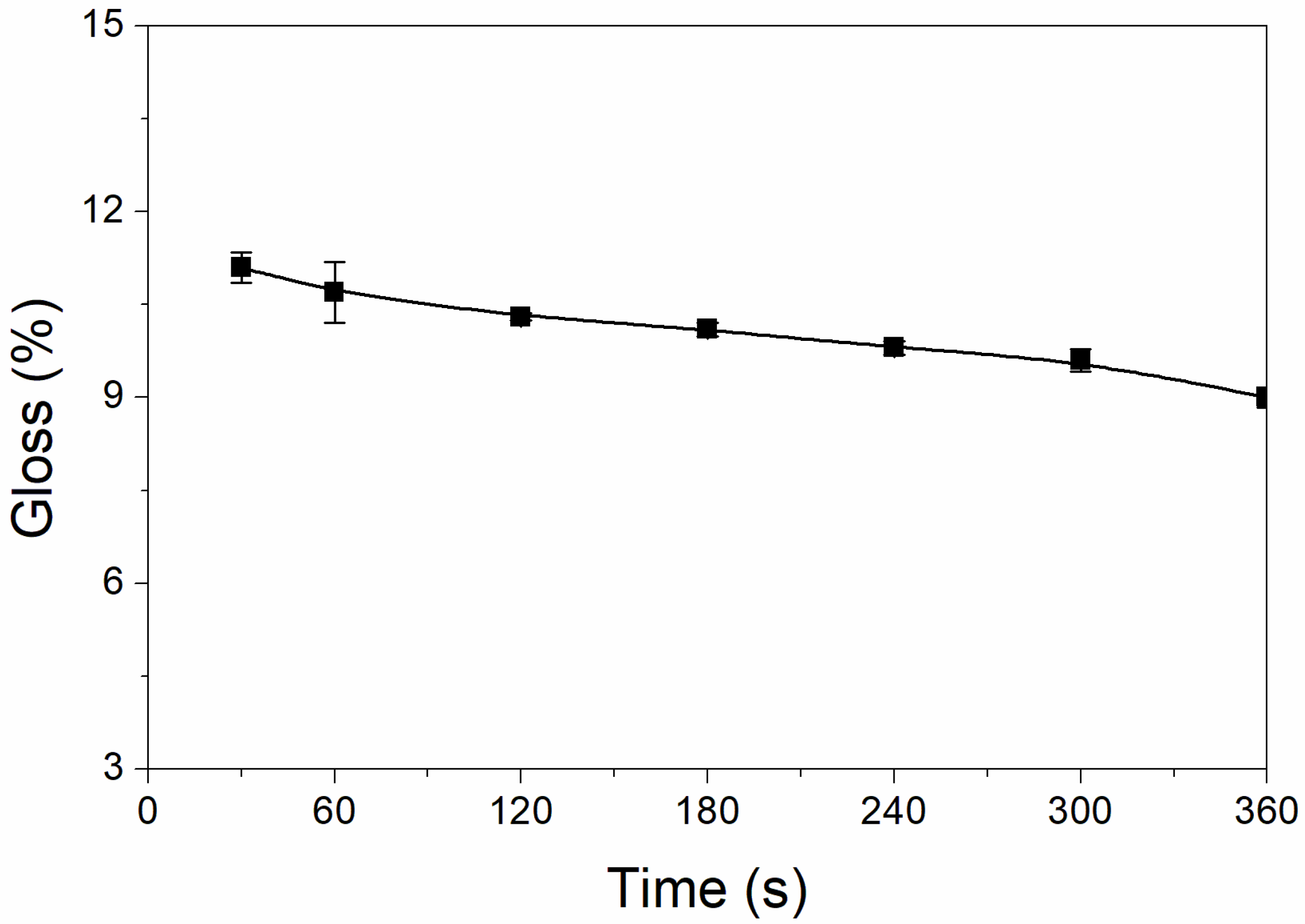
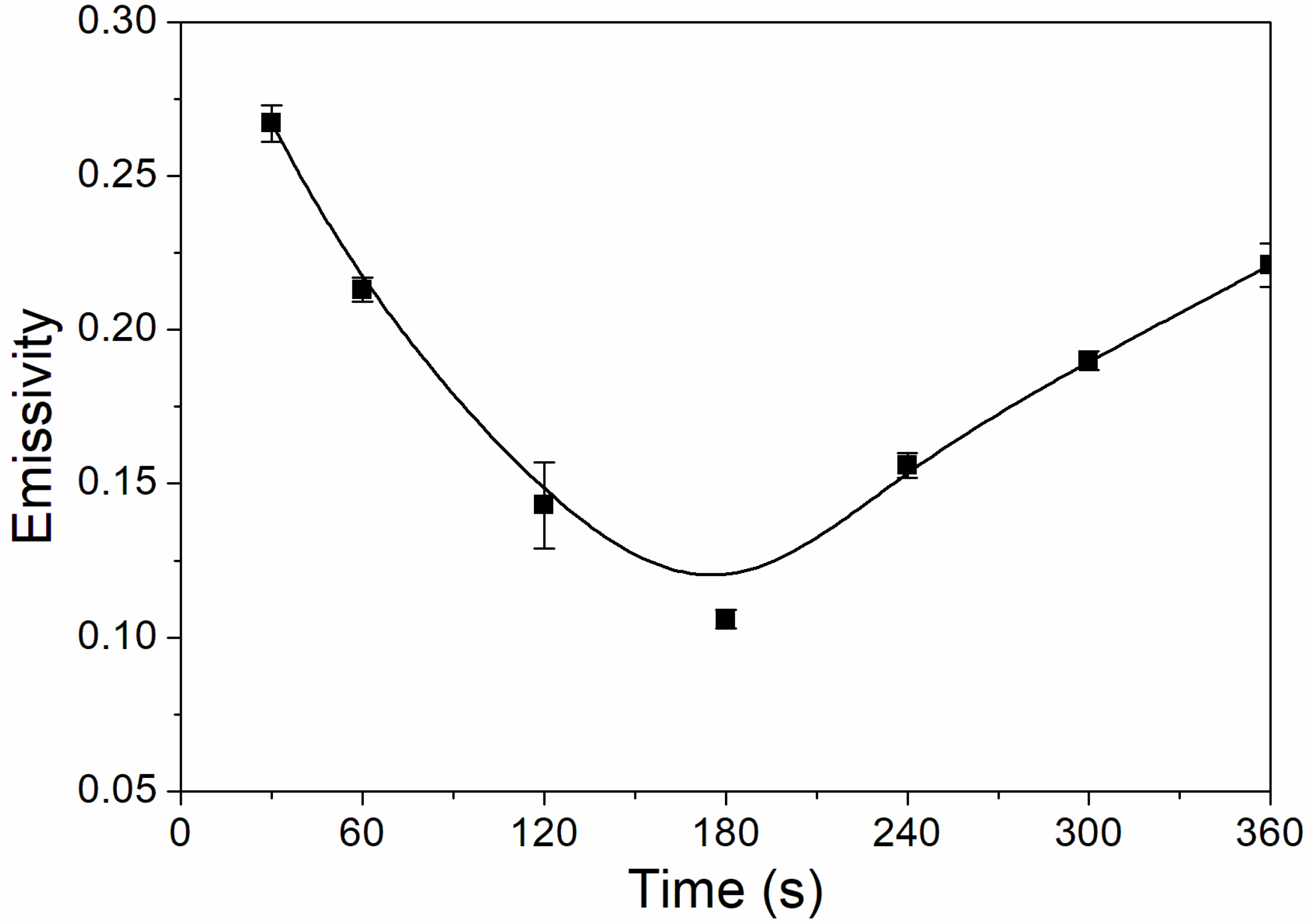


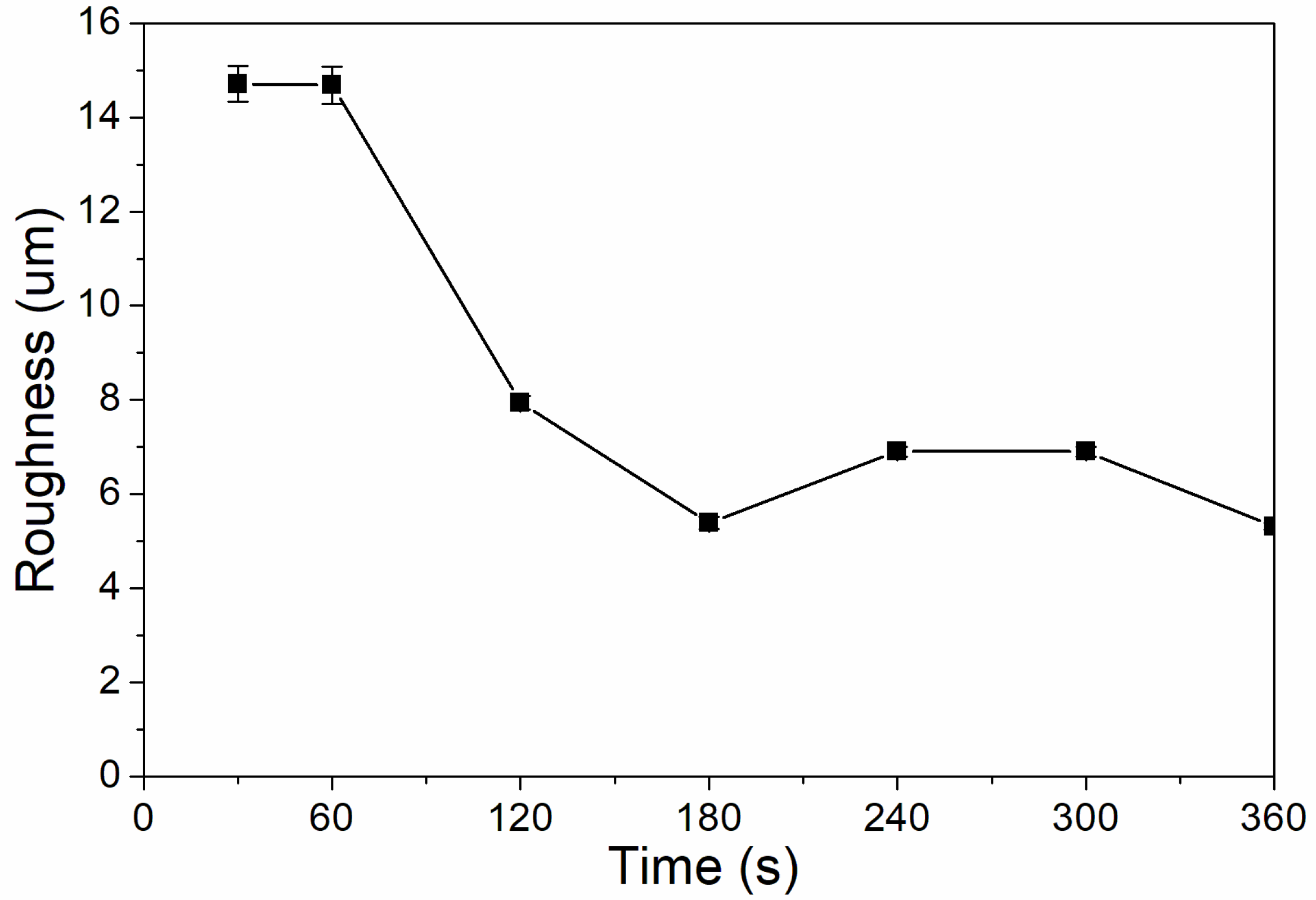
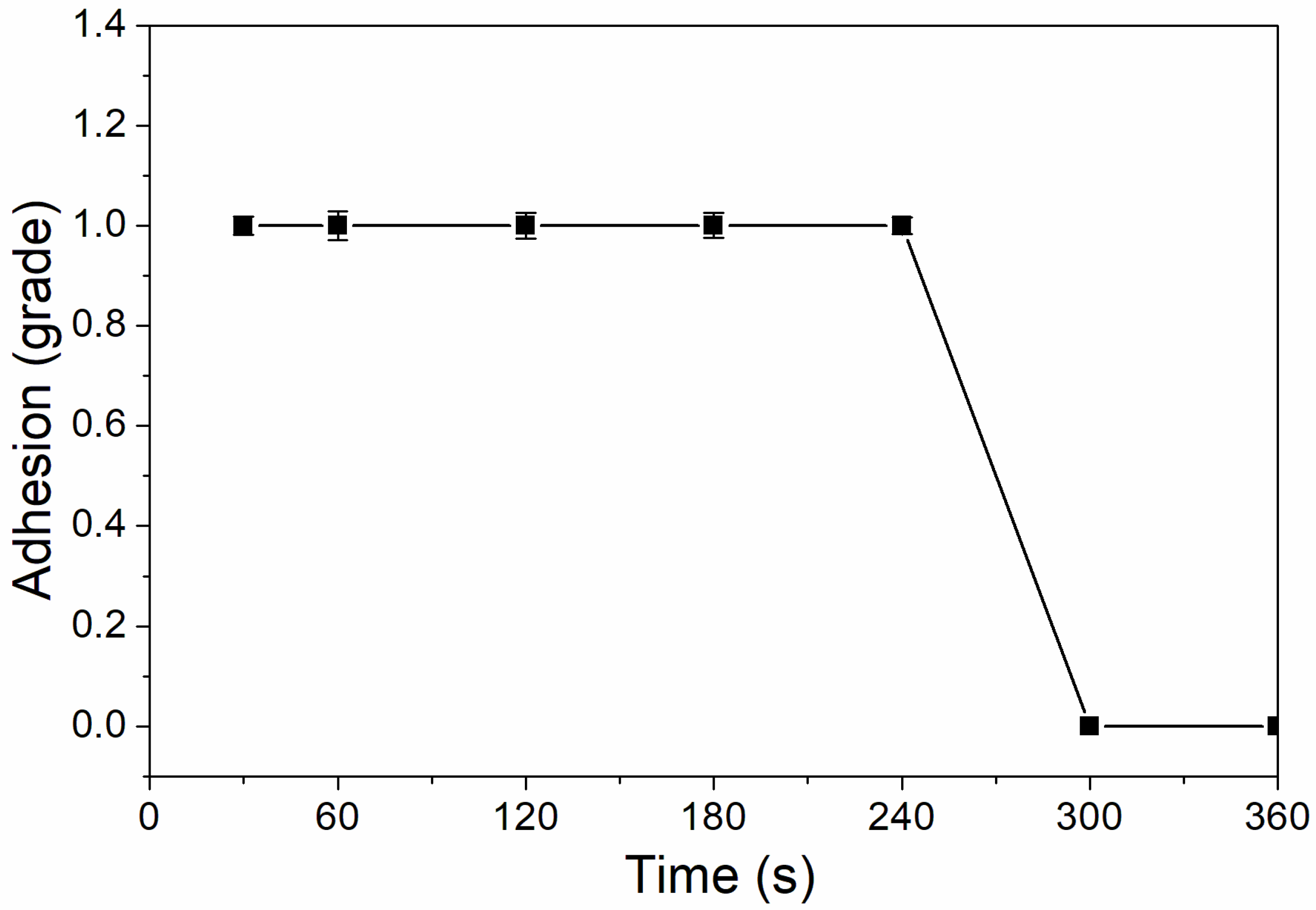
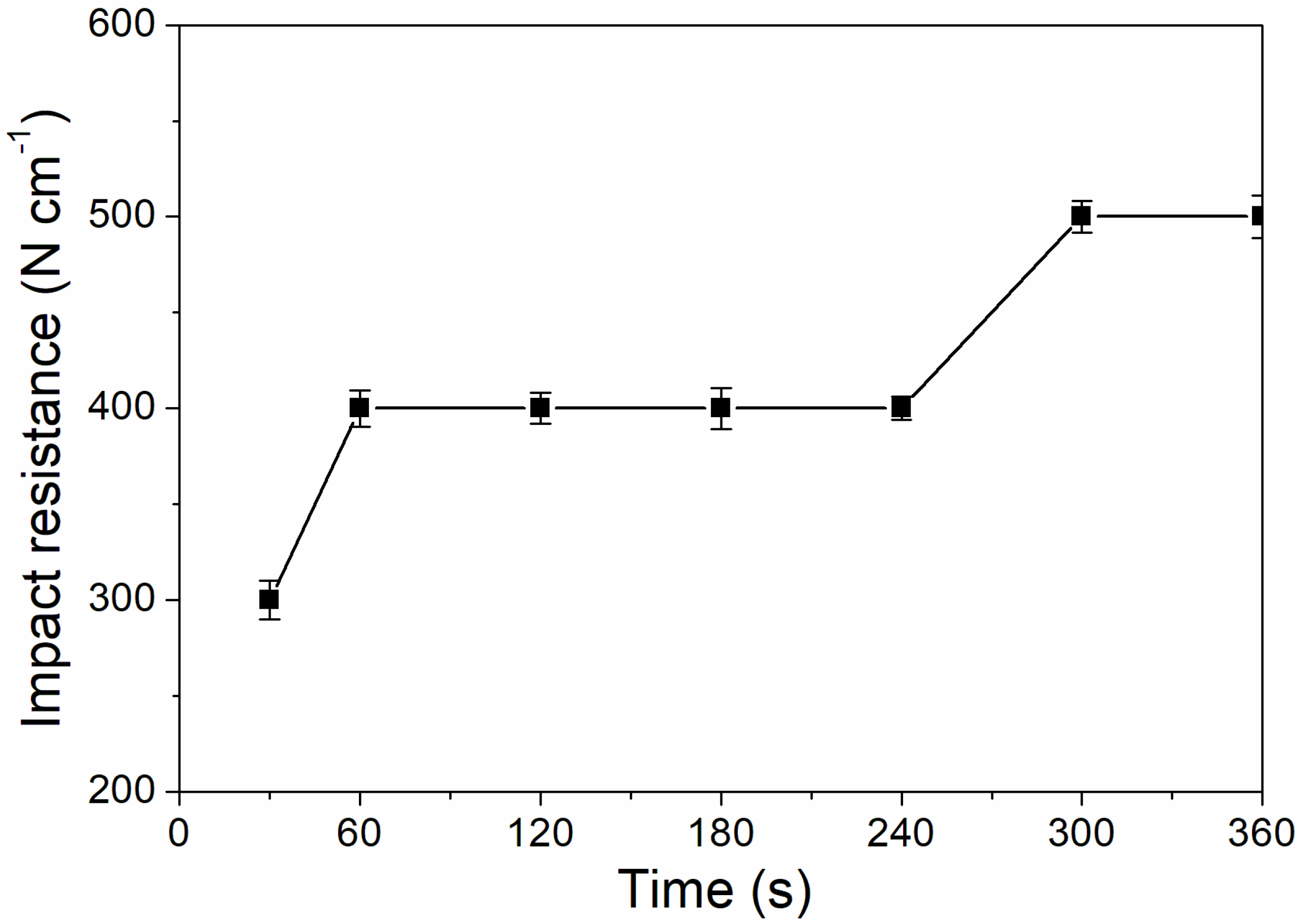
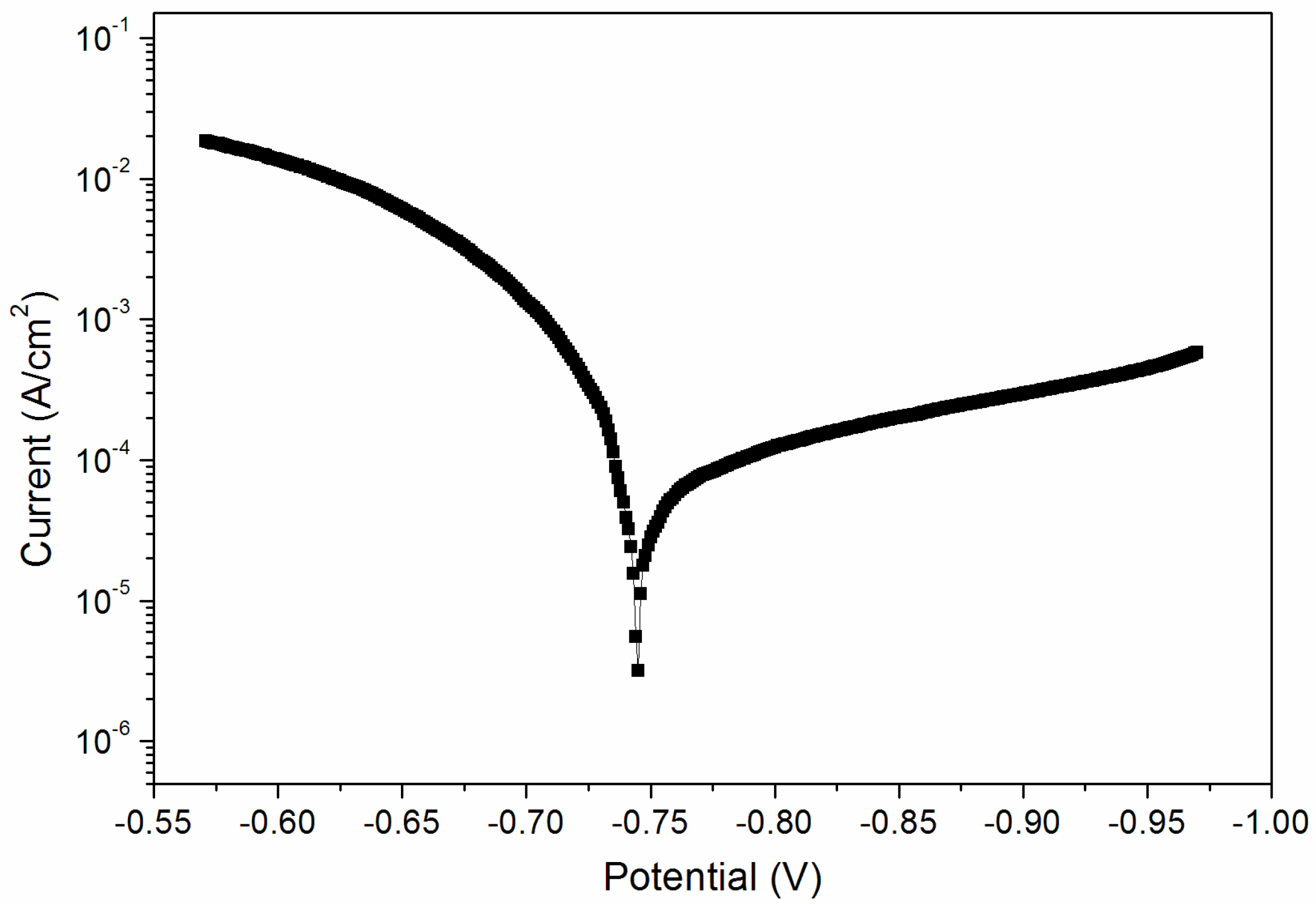

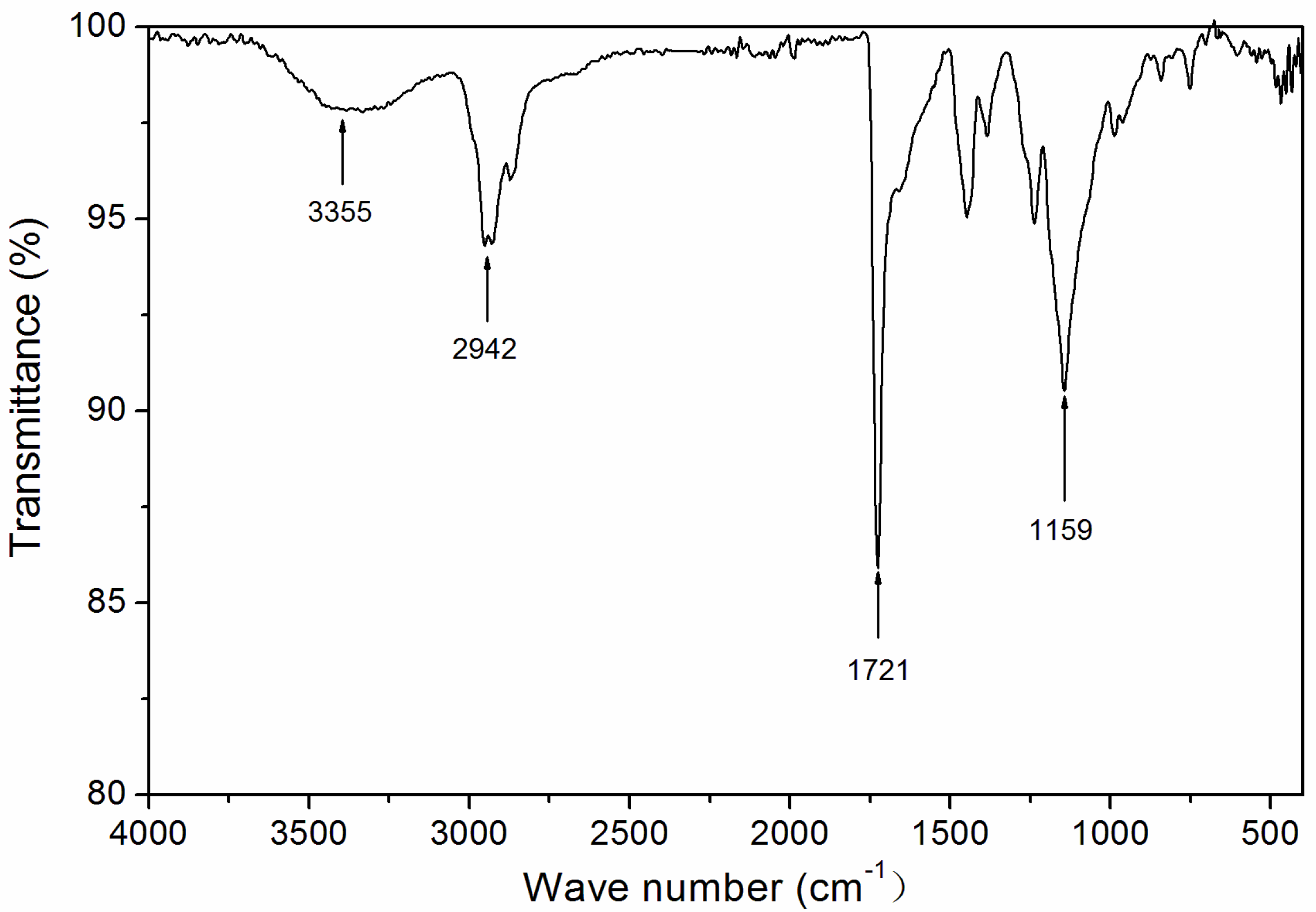
| Sample | Al (%) | Nano-Silica Slurry (%) | UV-Curing Time (s) |
|---|---|---|---|
| 1# | 20.0 | 2.0 | 120.0 |
| 2# | 20.0 | 10.0 | 360.0 |
| 3# | 40.0 | 2.0 | 360.0 |
| 4# | 40.0 | 10.0 | 120.0 |
| Sample | Al (g) | Nano-Silica Slurry (g) | KH560 (g) | UV-Curable Varnish (g) | UV-Curing Time (s) |
|---|---|---|---|---|---|
| 1# | 20.0 | 2.0 | 2.0 | 76.0 | 120.0 |
| 2# | 20.0 | 10.0 | 2.0 | 68.0 | 360.0 |
| 3# | 40.0 | 2.0 | 2.0 | 56.0 | 360.0 |
| 4# | 40.0 | 10.0 | 2.0 | 48.0 | 120.0 |
| 5# | 10.0 | 2.0 | 2.0 | 86.0 | 180.0 |
| 6# | 20.0 | 2.0 | 2.0 | 76.0 | 180.0 |
| 7# | 30.0 | 2.0 | 2.0 | 66.0 | 180.0 |
| 8# | 40.0 | 0 | 0 | 60.0 | 180.0 |
| 9# | 40.0 | 2.0 | 2.0 | 56.0 | 30.0 |
| 10# | 40.0 | 2.0 | 2.0 | 56.0 | 60.0 |
| 11# | 40.0 | 2.0 | 2.0 | 56.0 | 120.0 |
| 12# | 40.0 | 2.0 | 2.0 | 56.0 | 180.0 |
| 13# | 40.0 | 2.0 | 2.0 | 56.0 | 240.0 |
| 14# | 40.0 | 2.0 | 2.0 | 56.0 | 300.0 |
| Sample | Al (%) | Nano-Silica Slurry (%) | UV-Curing Time (s) | Glossiness (%) |
|---|---|---|---|---|
| 1# | 20.0 | 2.0 | 120.0 | 12.0 ± 0.3 |
| 2# | 20.0 | 10.0 | 360.0 | 9.0 ± 0.3 |
| 3# | 40.0 | 2.0 | 360.0 | 9.0 ± 0.2 |
| 4# | 40.0 | 10.0 | 120.0 | 10.0 ± 0.1 |
| K1 | 10.5 ± 0.1 | 10.5 ± 0.3 | 11.0 ± 0 | - |
| K2 | 9.5 ± 0.2 | 9.5 ± 0.3 | 9.0 ± 0.2 | - |
| R | 1.0 ± 0 | 1.0 ± 0 | 2.0 ± 0 | - |
| Sample | Al (%) | Nano-Silica Slurry (%) | UV-Curing Time (s) | Infrared Emissivity |
|---|---|---|---|---|
| 1# | 20.0 | 2.0 | 120.0 | 0.203 ± 0.003 |
| 2# | 20.0 | 10.0 | 360.0 | 0.257 ± 0.007 |
| 3# | 40.0 | 2.0 | 360.0 | 0.221 ± 0.008 |
| 4# | 40.0 | 10.0 | 120.0 | 0.185 ± 0.006 |
| K1 | 0.230 ± 0.008 | 0.212 ± 0.009 | 0.194 ± 0.007 | - |
| K2 | 0.203 ± 0.006 | 0.221 ± 0.003 | 0.239 ± 0.007 | - |
| R | 0.027 ± 0.006 | 0.009 ± 0 | 0.045 ± 0.001 | - |
| Curing Time (s) | L | a* | b* | L’ | a*’ | b*’ | ΔE |
|---|---|---|---|---|---|---|---|
| 30 | 25.9 ± 0.6 | 5.2 ± 0.3 | −3.1 ± 0 | 78.6 ± 2.9 | 2.5 ± 0.2 | −4.3 ± 0.1 | 52.8 ± 1.0 |
| 60 | 25.9 ± 0.6 | 5.2 ± 0.3 | −3.1 ± 0 | 77.2 ± 1.0 | 2.2 ± 0.2 | −4.3 ± 0.1 | 51.4 ± 1.6 |
| 120 | 25.9 ± 0.6 | 5.2 ± 0.3 | −3.1 ± 0 | 76.3 ± 2.4 | 2.5 ± 0.2 | −4.4 ± 0.1 | 50.5 ± 1.5 |
| 180 | 25.9 ± 0.6 | 5.2 ± 0.3 | −3.1 ± 0 | 76.1 ± 1.8 | 2.5 ± 0.2 | −1.5 ± 0 | 50.3 ± 1.4 |
| 240 | 25.9 ± 0.6 | 5.2 ± 0.3 | −3.1 ± 0 | 75.8 ± 1.9 | 2.3 ± 0.2 | −5.3 ± 0.2 | 50.0 ± 1.4 |
| 300 | 25.9 ± 0.6 | 5.2 ± 0.3 | −3.1 ± 0 | 75.7 ± 1.8 | 2.3 ± 0.2 | −0.6 ± 0 | 49.9 ± 1.2 |
| 360 | 25.9 ± 0.6 | 5.2 ± 0.3 | −3.1 ± 0 | 75.0 ± 1.7 | 1.4 ± 0.2 | −3.9 ± 0.1 | 49.3 ± 1.1 |
| Curing Time (s) | Ecorr (V) | Rp (Ω·cm2) | Icorr (A·cm−2) | βa (mV·dec−1) | βc (mV·dec−1) |
|---|---|---|---|---|---|
| 30 | −0.745 ± 0 | 133.2 ± 2.4 | 2.337 × 10−4 ± 0 | 99.69 ± 3.1 | 254.26 ± 8.4 |
| 180 | −0.748 ± 0 | 171.1 ± 4.6 | 1.802 × 10−4 ± 0 | 124.86 ± 4.0 | 164.07 ± 5.6 |
| Curing Time (s) | L | a* | b* | L’ | a*’ | b*’ | ΔE | Glossiness before Test (%) | Glossiness after Test (%) | Loss of Glossiness (%) |
|---|---|---|---|---|---|---|---|---|---|---|
| 30 | 78.6 ± 2.9 | 2.5 ± 0.2 | −4.3 ± 0.1 | 72.6 ± 2.5 | 2.4 ± 0.1 | −0.9 ± 0 | 6.9 ± 0.3 | 11.1 ± 0.2 | 3.4 ± 0.1 | 7.7 ± 0.2 |
| 180 | 76.1 ± 1.8 | 2.5 ± 0.2 | −1.5 ± 0 | 75.4 ± 2.1 | 2.1 ± 0 | −0.9 ± 0 | 1.0 ± 0 | 10.1 ± 0.1 | 3.6 ± 0.1 | 6.5 ± 0.2 |
| Al (%) | Nano-Silica Slurry (%) | UV-Curing Time (s) | Glossiness (%) | Infrared Emissivity |
|---|---|---|---|---|
| 10.0 | 2.0 | 180.0 | 13.0 ± 0.2 | 0.468 ± 0 |
| 20.0 | 2.0 | 180.0 | 11.8 ± 0.5 | 0.310 ± 0 |
| 30.0 | 2.0 | 180.0 | 11.2 ± 0.3 | 0.275 ± 0 |
| 40.0 | 2.0 | 180.0 | 10.1 ± 0.1 | 0.106 ± 0 |
| 40.0 | 0 | 180.0 | 54.0 ± 1.6 | 0.118 ± 0 |
| Coating | Filler Mass Fraction (%) | Emissivity | Glossiness (%) | Adhesion (Level) | Impact Resistance (N·cm−1) |
|---|---|---|---|---|---|
| Epoxy-lacquer/Al | 30 | 0.065 | 5.7 | 1 | 500 |
| PU/Cu | 50 | 0.100 | 45.2 | 3 | 200 |
| PU/(ball-milled Ag–Cu) | 50 | 0.129 | 35.6 | 3 | 200 |
| PU/Al | 40 | 0.068 | 38.3 | 1 | 400 |
| Al/waterborne arcylic coating | 30 | 0.113 | 7.7 | 0 | 150 |
| Al/UV modified by nano-silica slurry | 40 | 0.106 | 10.1 | 1 | 400 |
© 2020 by the authors. Licensee MDPI, Basel, Switzerland. This article is an open access article distributed under the terms and conditions of the Creative Commons Attribution (CC BY) license (http://creativecommons.org/licenses/by/4.0/).
Share and Cite
Yan, X.; Chang, Y.; Qian, X. The Properties of an Aluminum/UV-Curable, Infrared, Low-Emissivity Coating Modified by Nano-Silica Slurry. Coatings 2020, 10, 382. https://doi.org/10.3390/coatings10040382
Yan X, Chang Y, Qian X. The Properties of an Aluminum/UV-Curable, Infrared, Low-Emissivity Coating Modified by Nano-Silica Slurry. Coatings. 2020; 10(4):382. https://doi.org/10.3390/coatings10040382
Chicago/Turabian StyleYan, Xiaoxing, Yijuan Chang, and Xingyu Qian. 2020. "The Properties of an Aluminum/UV-Curable, Infrared, Low-Emissivity Coating Modified by Nano-Silica Slurry" Coatings 10, no. 4: 382. https://doi.org/10.3390/coatings10040382




